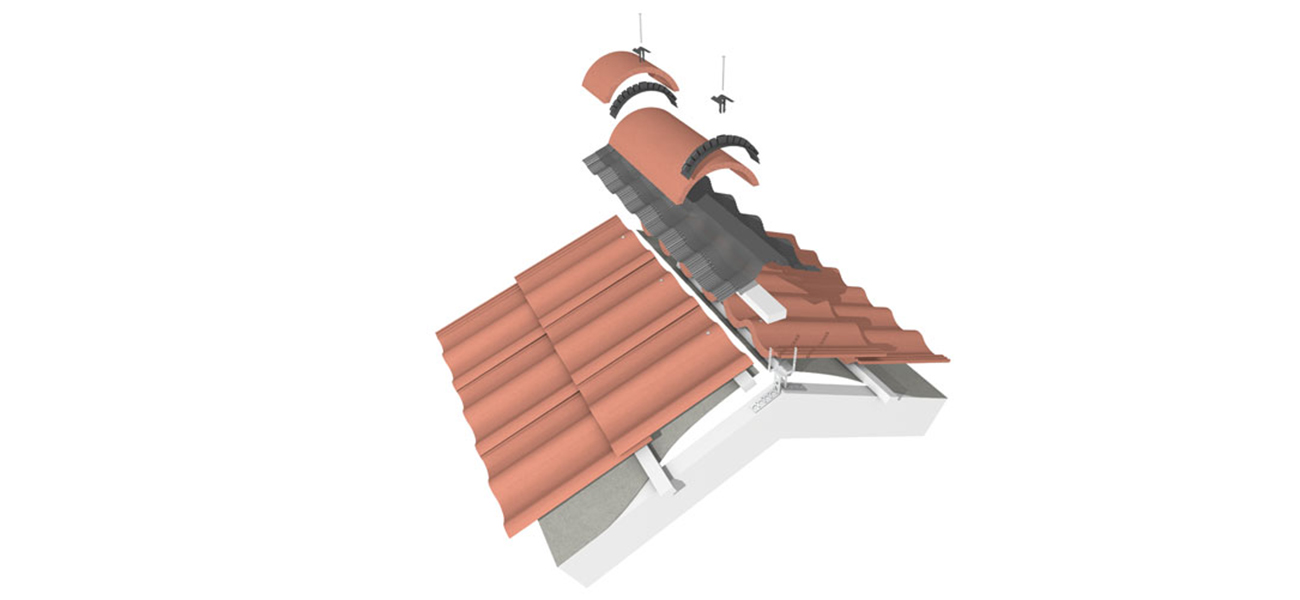Is a dry fix system for ridges suitable for use on hips

Dry fix kits are available in the marketplace that can be used generically on both hips and ridges. However, some manufacturers recommend that specifiers, installers and home owners benefit the most from purpose made systems, specific to the roof area they are being installed on. Purpose-made ridge and hip systems often benefit from the inclusion of components (fixings etc.) that are specific to the roof area they are used for. In the case of some purpose-made systems, they offer additional components that aren’t available, or must be purchased separately on generic systems. This is something that customers often don’t realise.
For example, in the case of dry hip, many of the purpose made kits for this detail benefit from additional components such as head and tail clips that are designed to securely fix small tile cuts, and a spacer to help the ridge and hip intersect neatly at the junction.
Another consideration often overlooked is that special batten brackets are also included in specific ridge and hip dry fix systems. The function of these units is to secure to the timber structure, providing a structural anchor for a timber batten - which permits the robust mechanical fixing of hip and ridge tiles. In purpose-made kits, these brackets are bespoke for their application, as the structural hip and ridge detail are very different, meaning that the brackets need to reflect this. Many generic systems have to get around this with simple and low-grade strap solution or through building up layers of batten
Generic ridge/hip kits, due to their intended universality, generally do not include purpose-engineered components, as they have to be generic enough to accommodate the differing details. To overcome the waste and expense of having unwanted hip components on a ridge detail, many of these components are left out and have to be purchased separately. This is something that is often overlooked, when customers see a headline price.
Whilst generic ridge and hip systems are undoubtedly commonplace and a recognised solution for these details, there is some argument that their universality places more responsibility and risk on the contractor to ensure that they are installed correctly.
Ultimately, achieving the necessary strength in the mechanical fix is essential to prevent a ridge or hip system from failing. And with extreme weather events on the rise, there is little doubt that all dry fix systems installed across the UK will be tested to unprecedented levels. Naturally the we feel that our purpose-made systems are ideally suited to deal with this effectively.
Disclaimer - The information shared in this blog is correct at the time of publication. Guidance, standards, and best practices may change over time, so if you’d like further clarification or the latest updates, please get in touch with the Marley Technical Advisory Team, who will be happy to help.